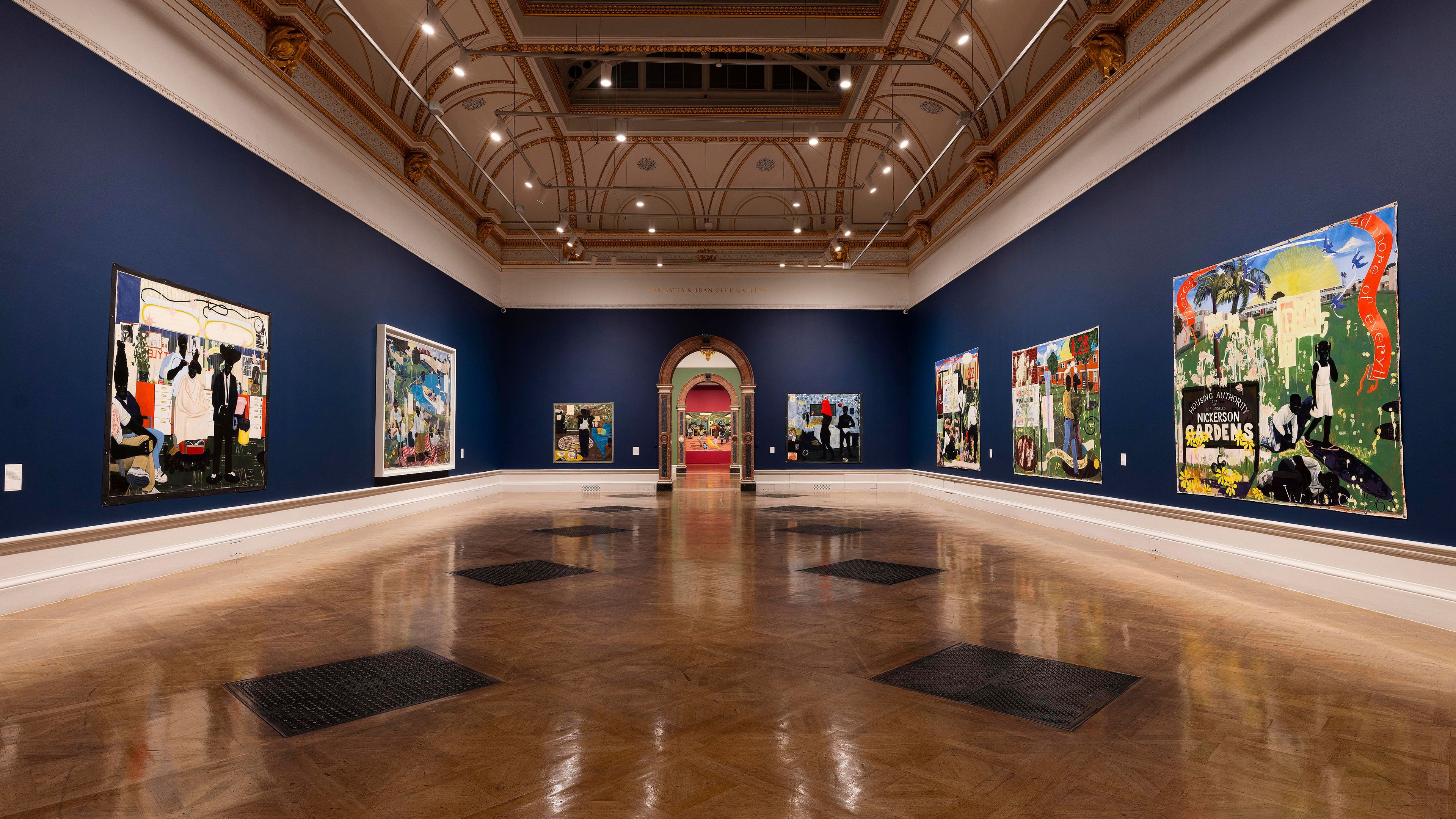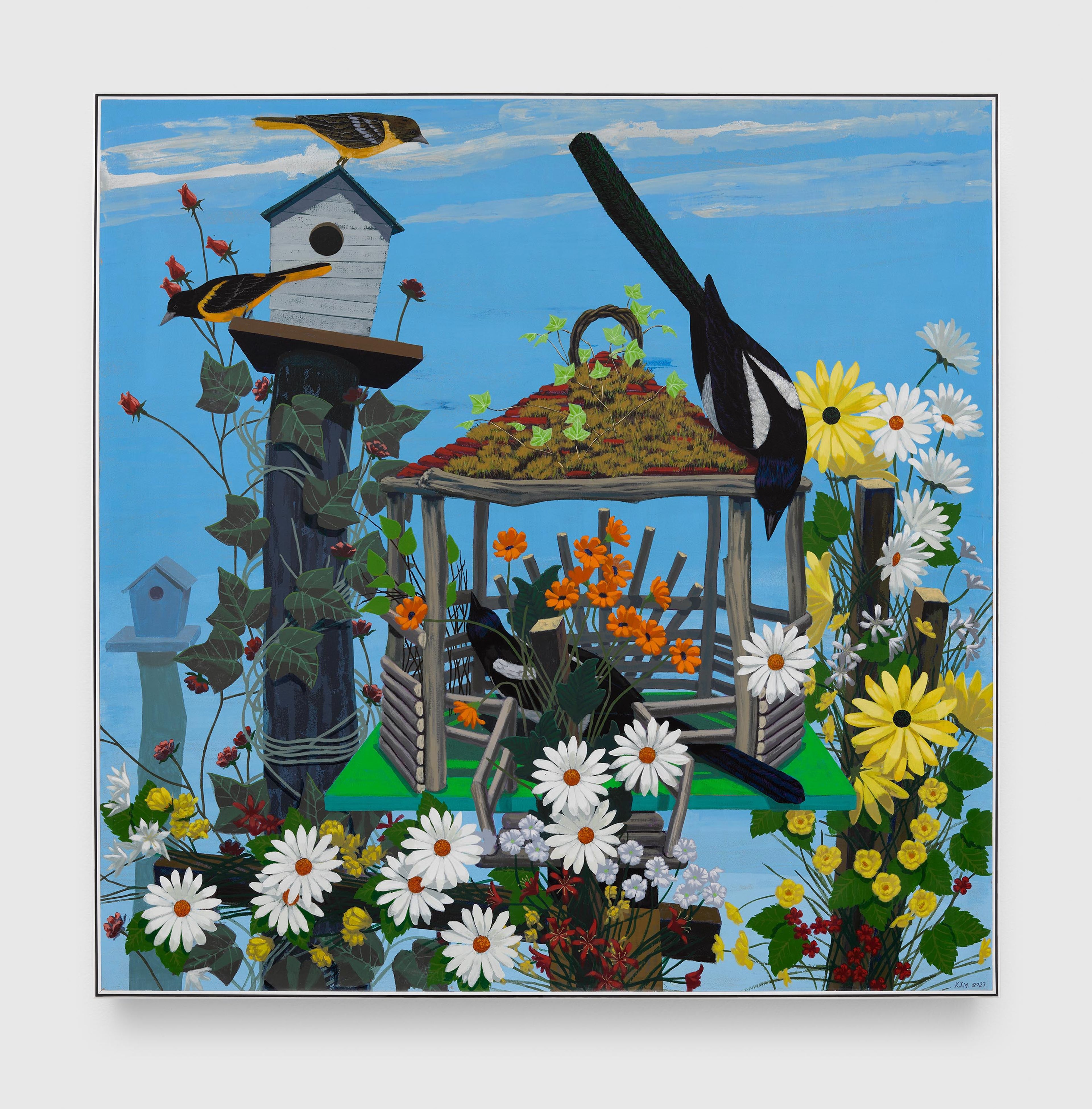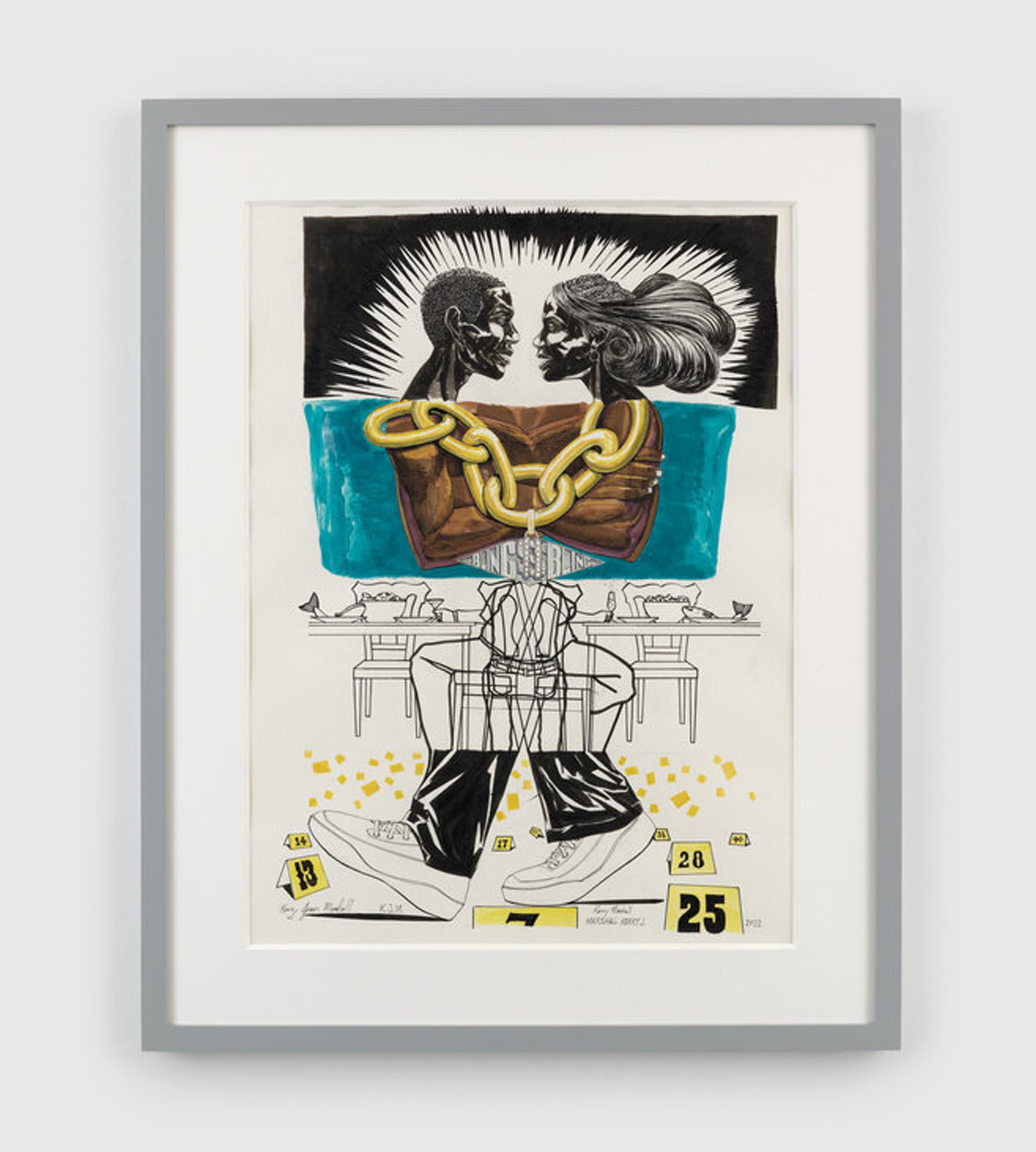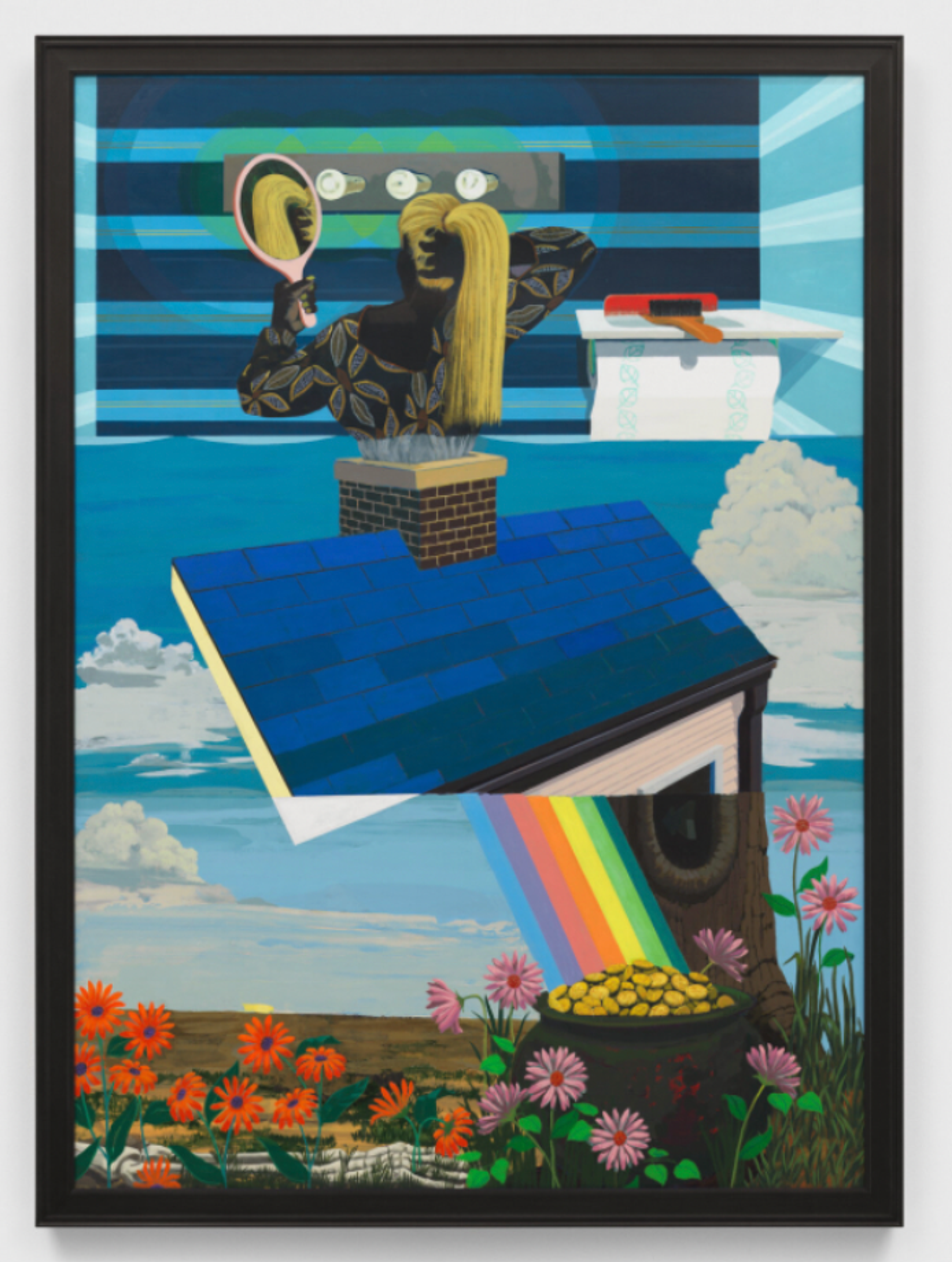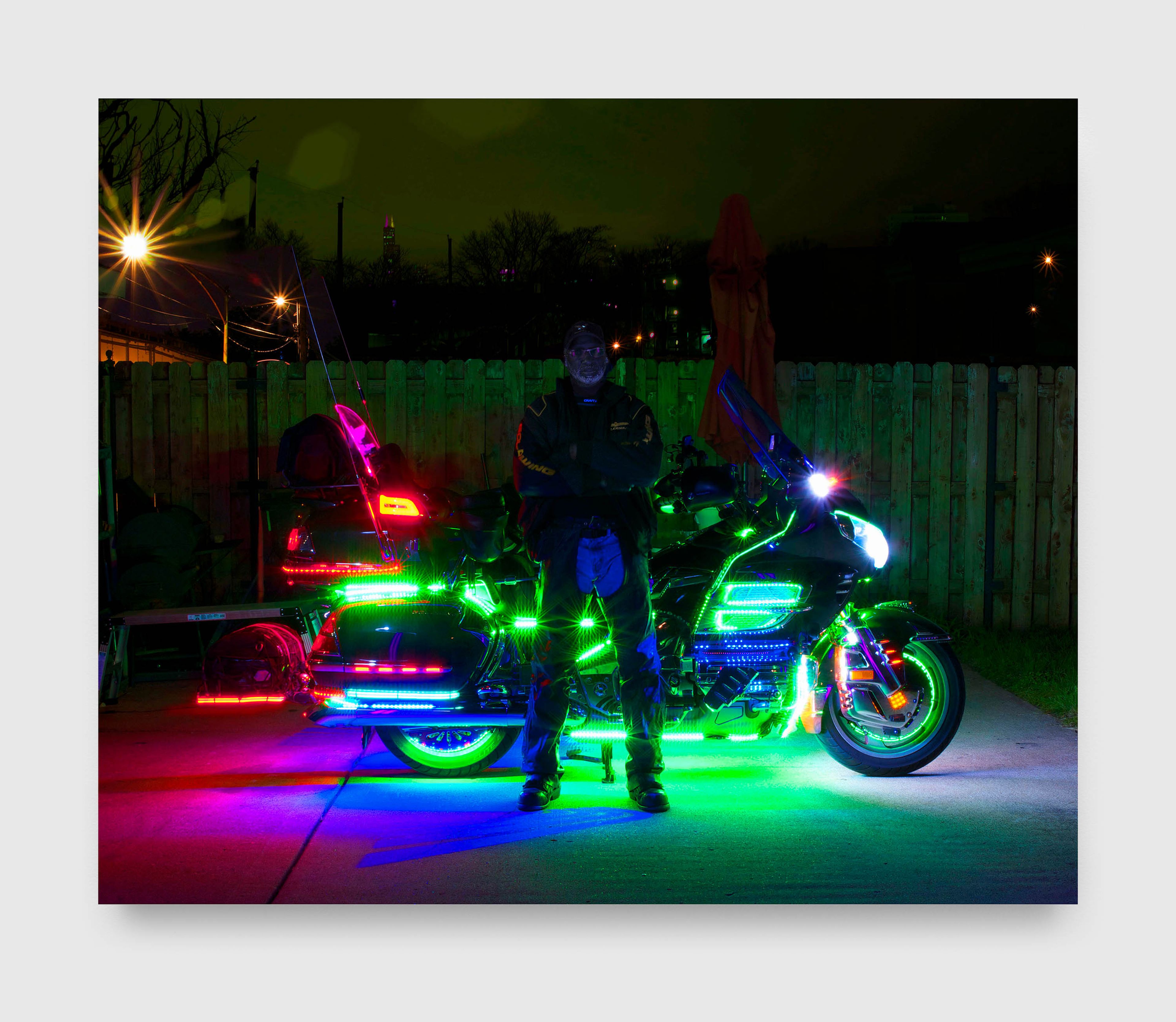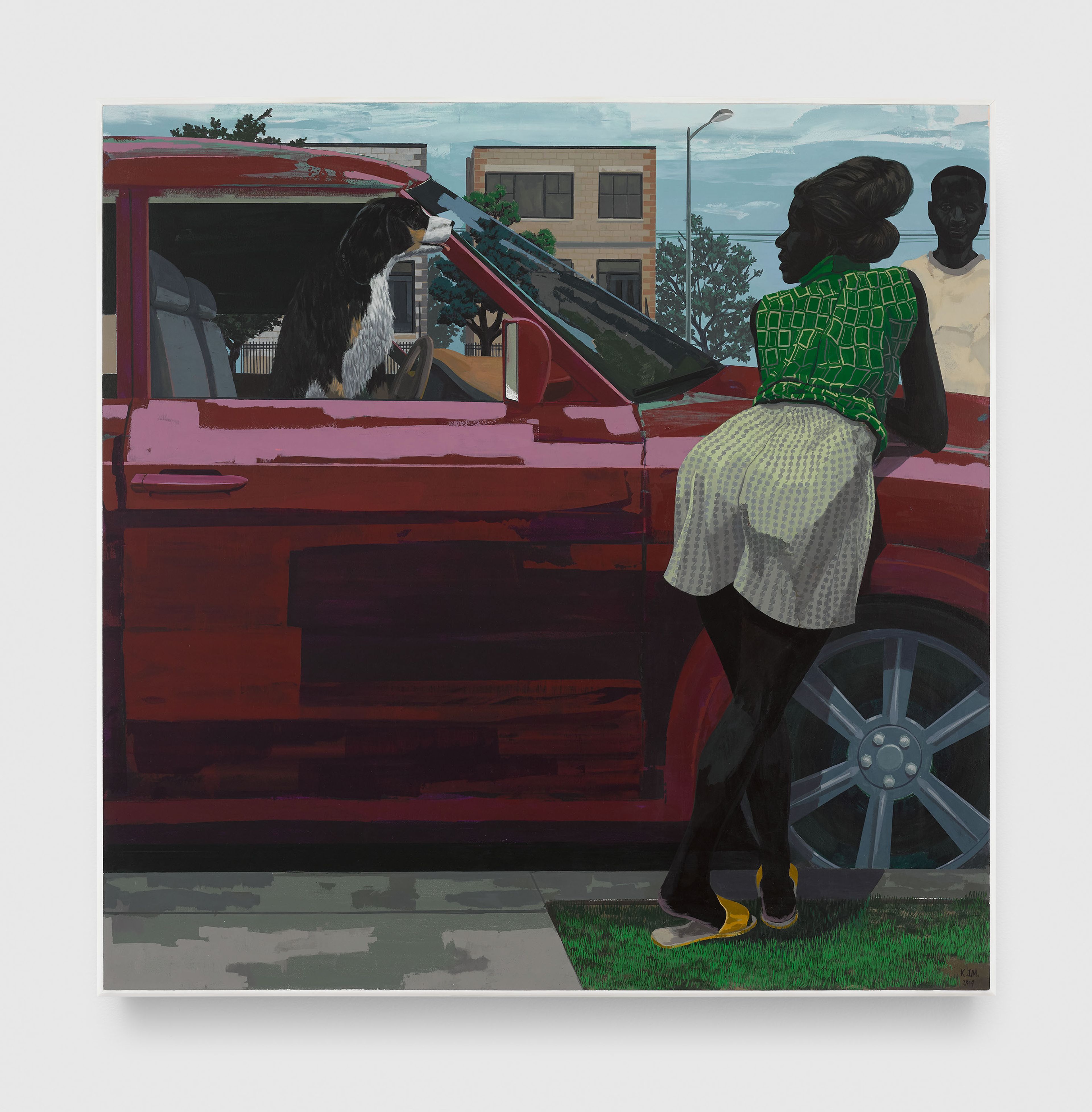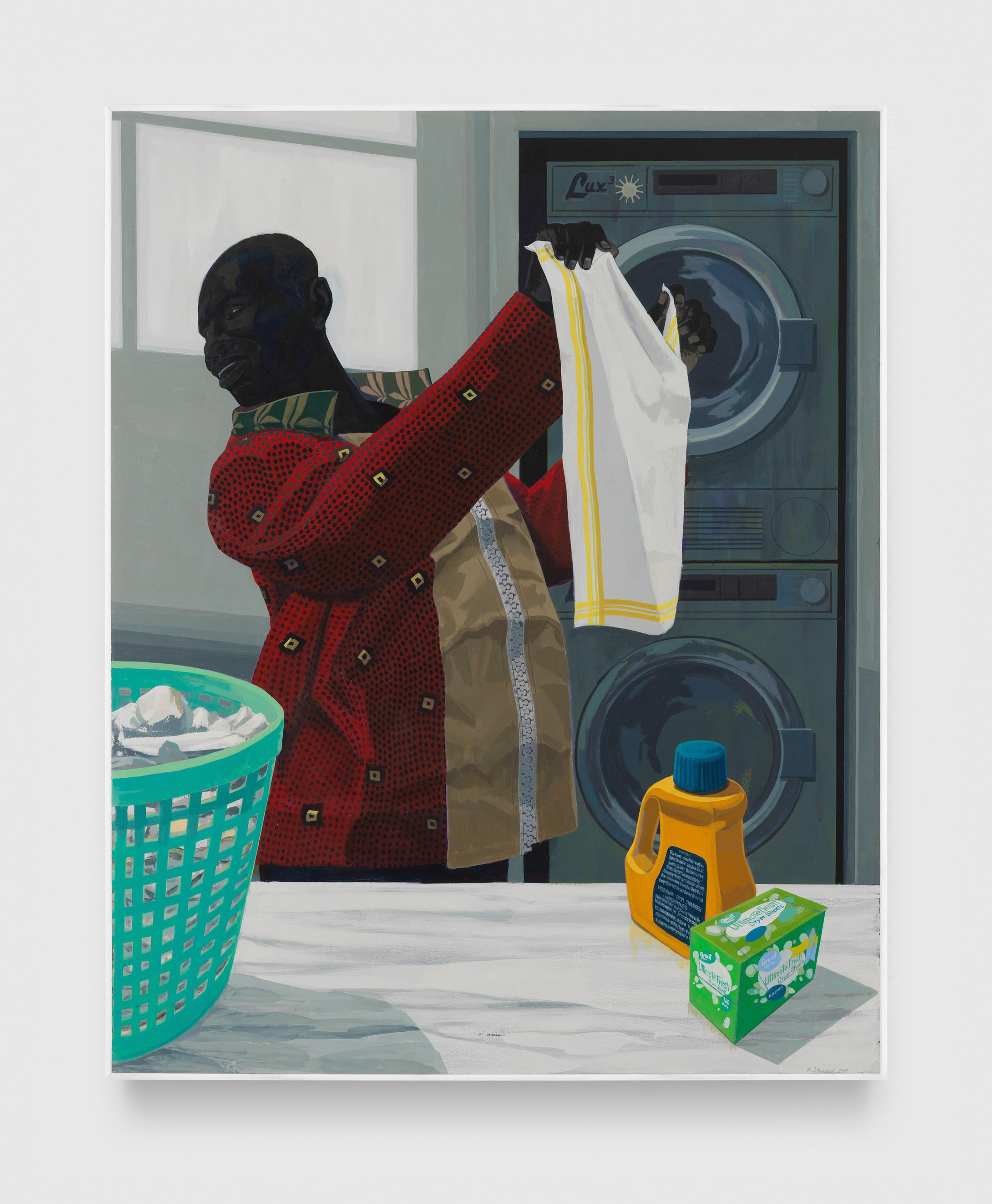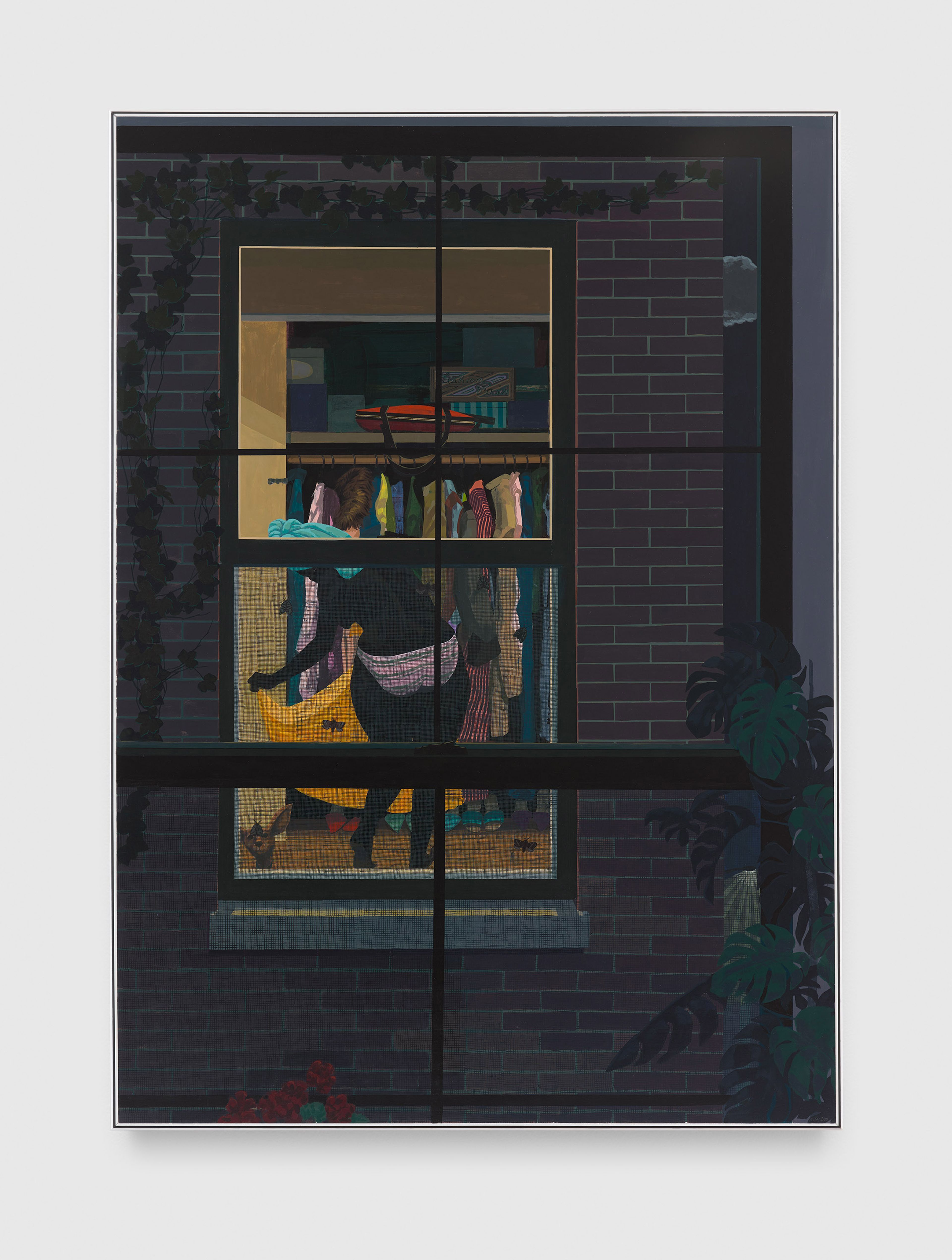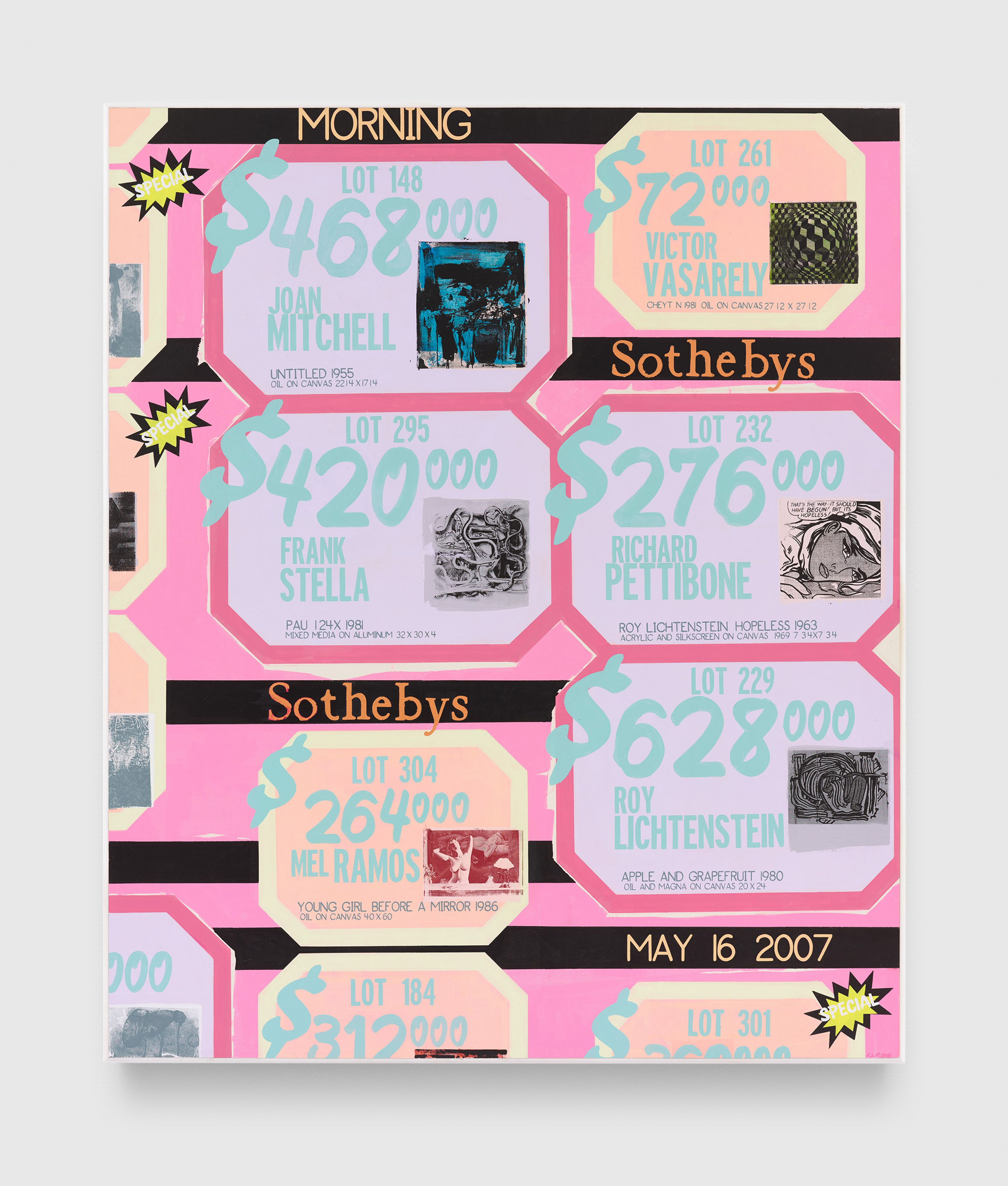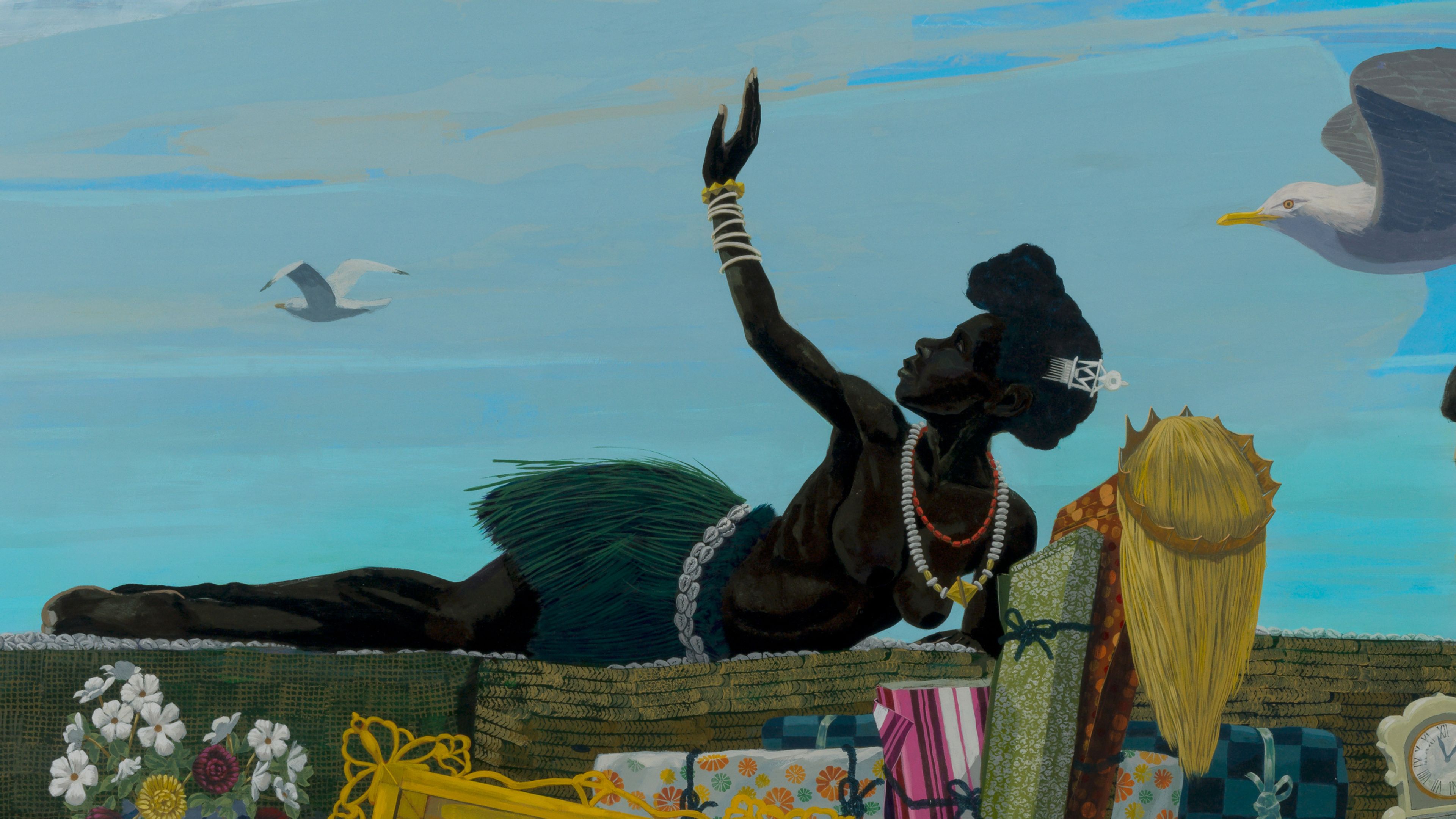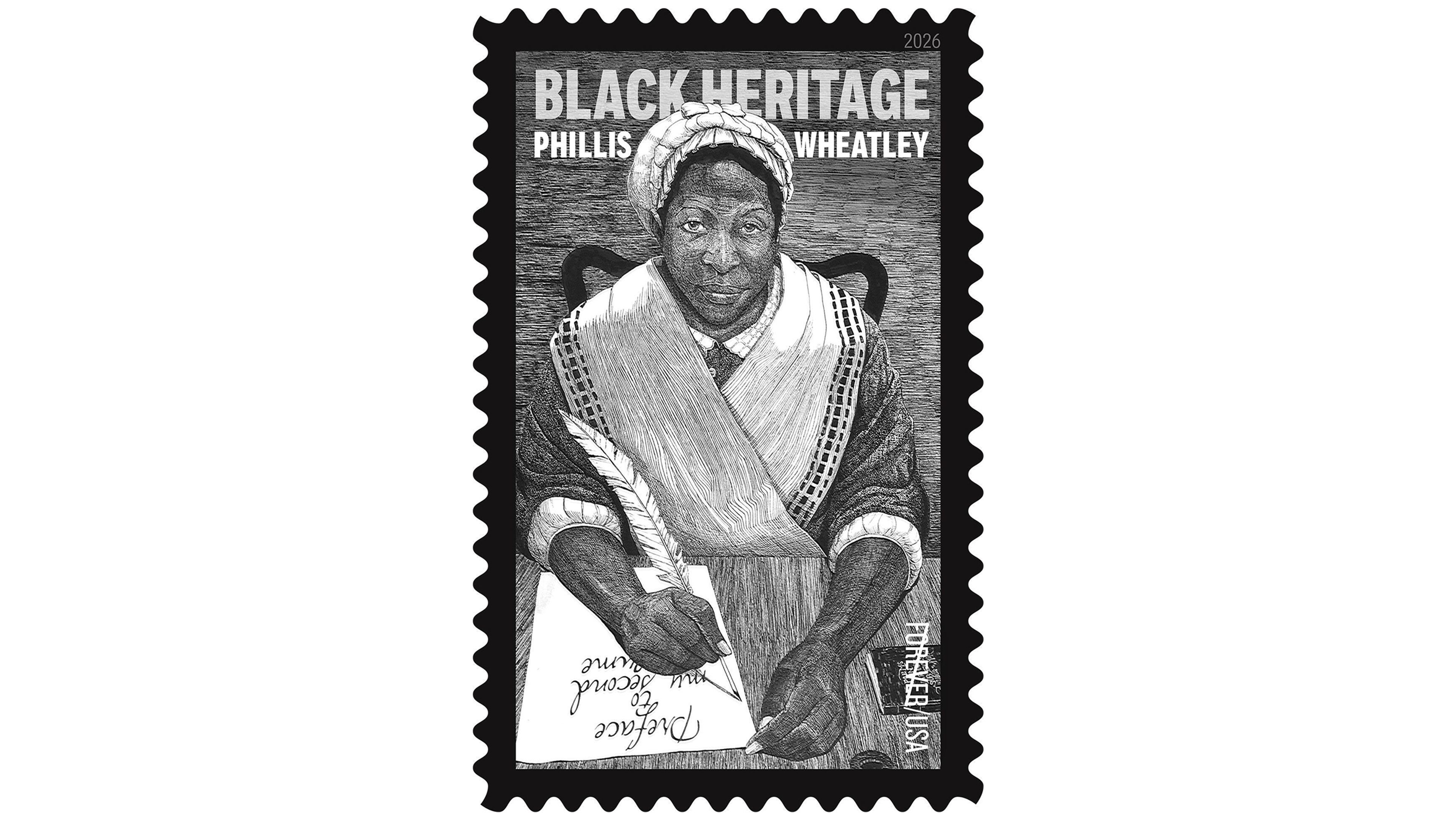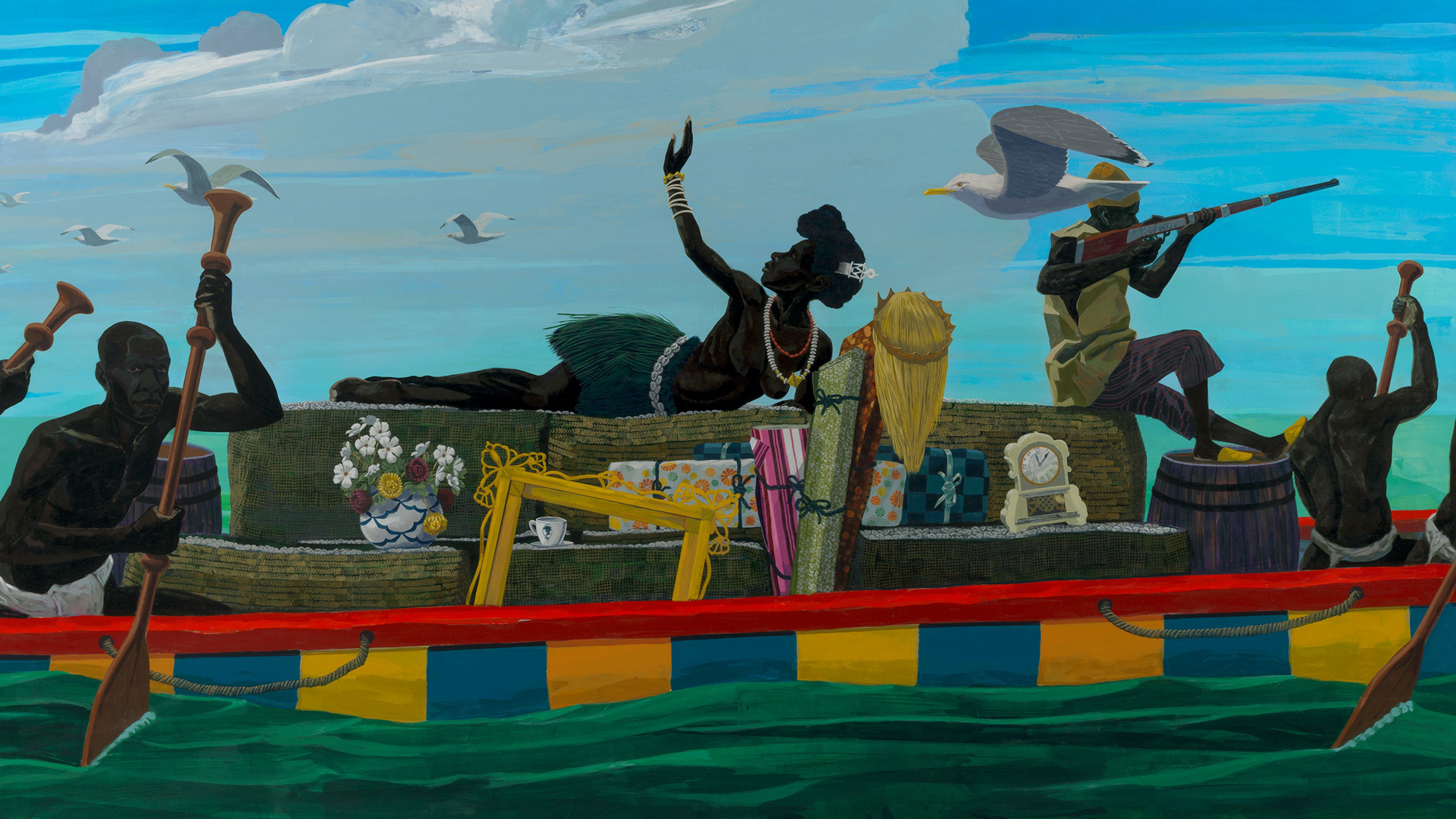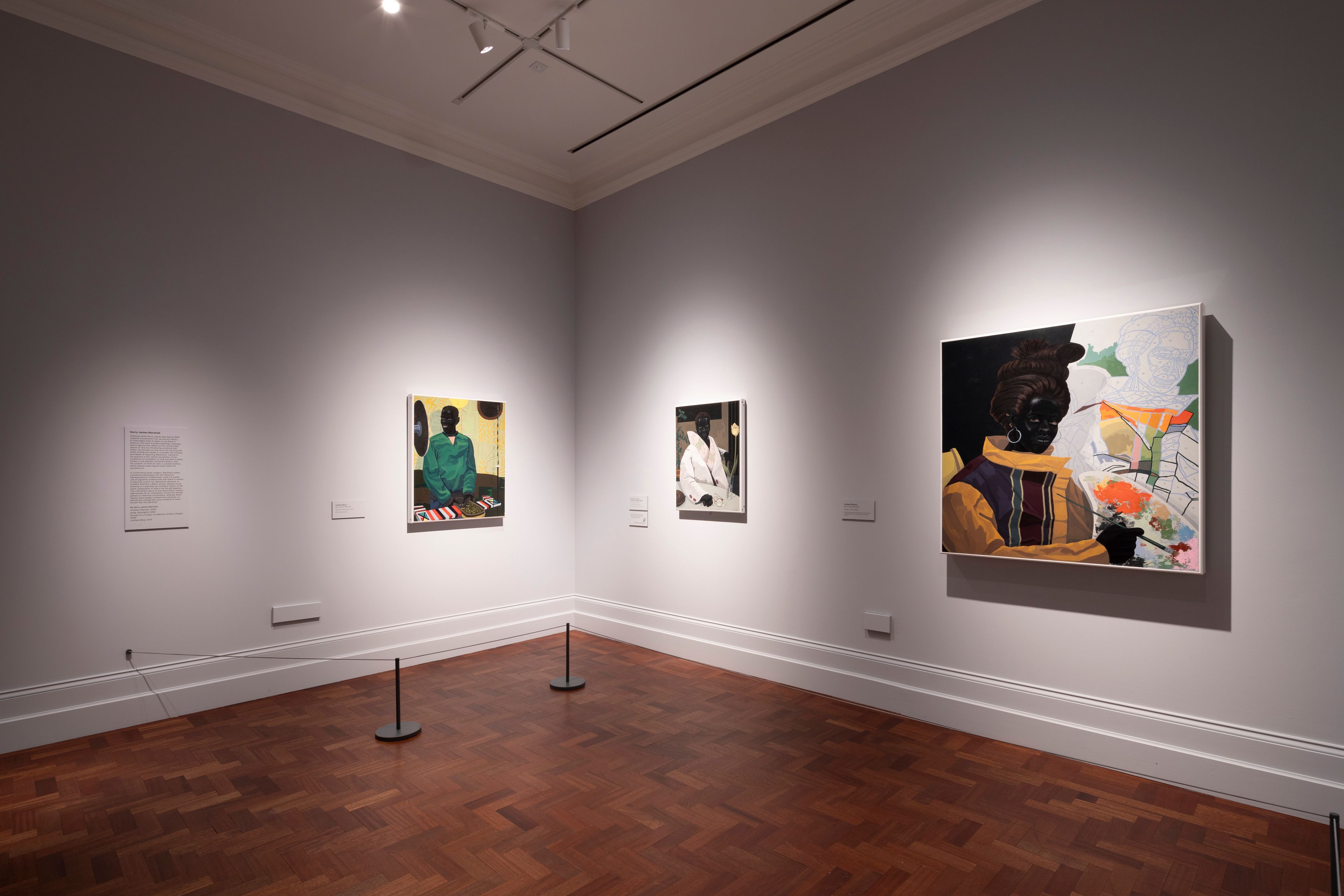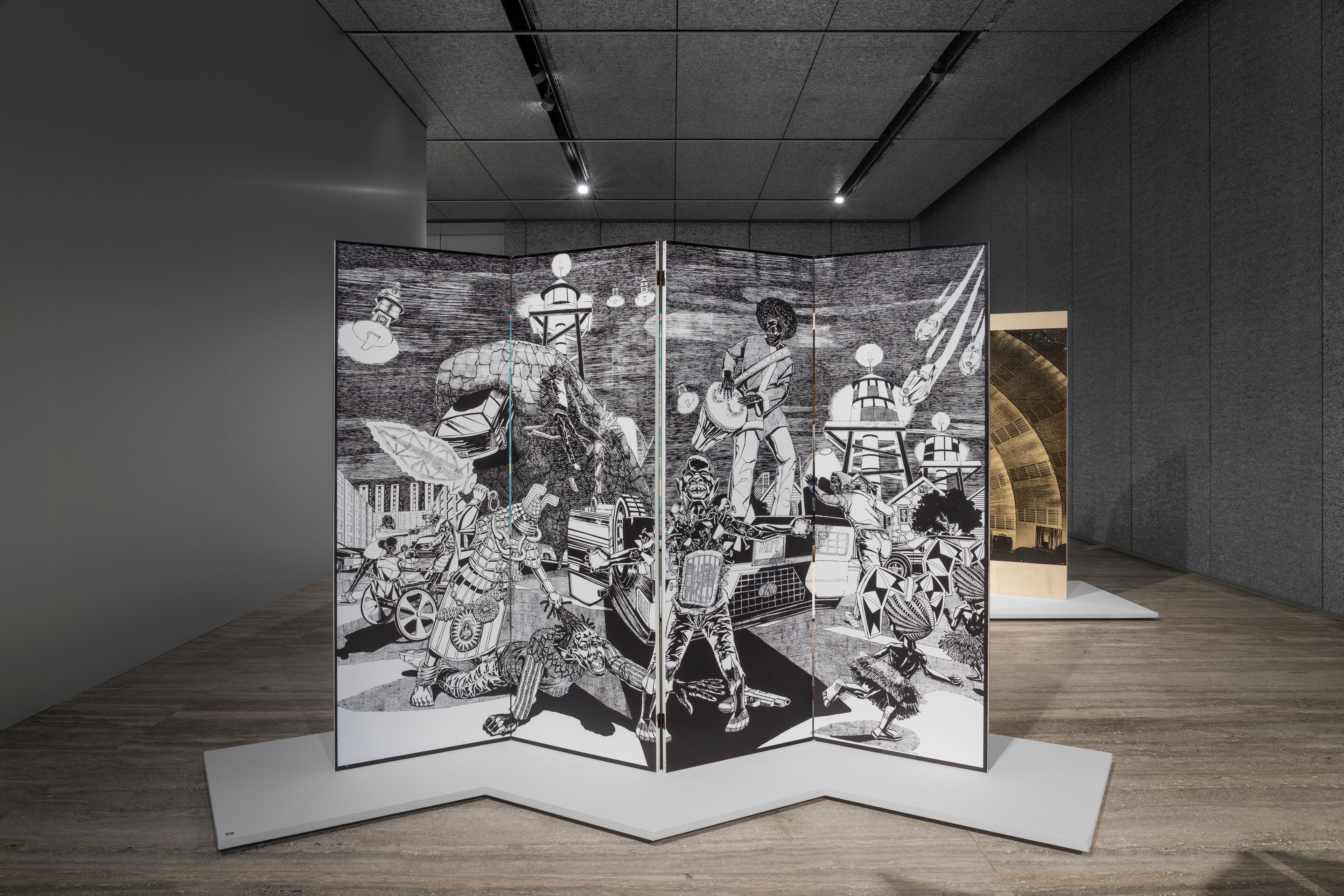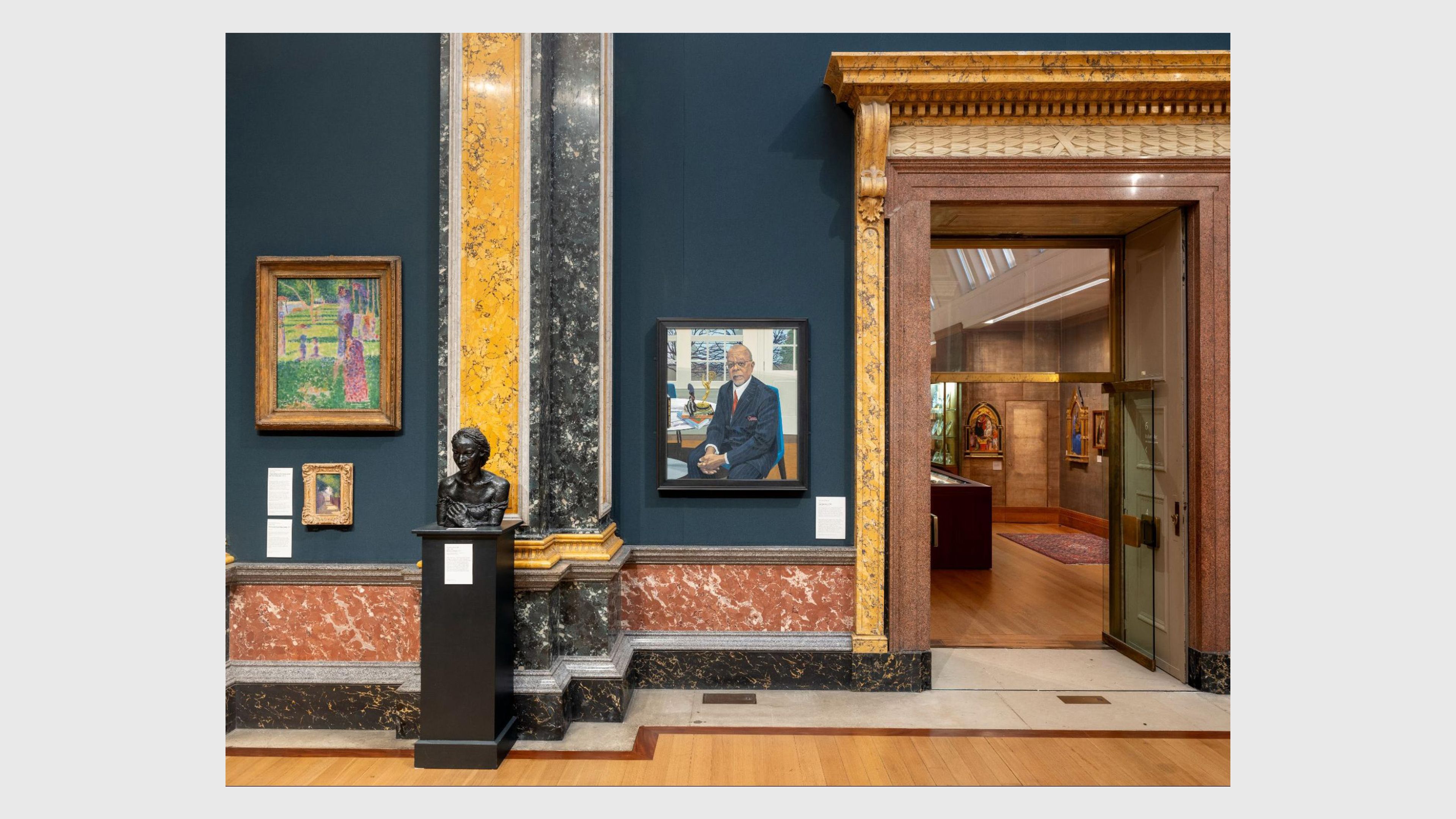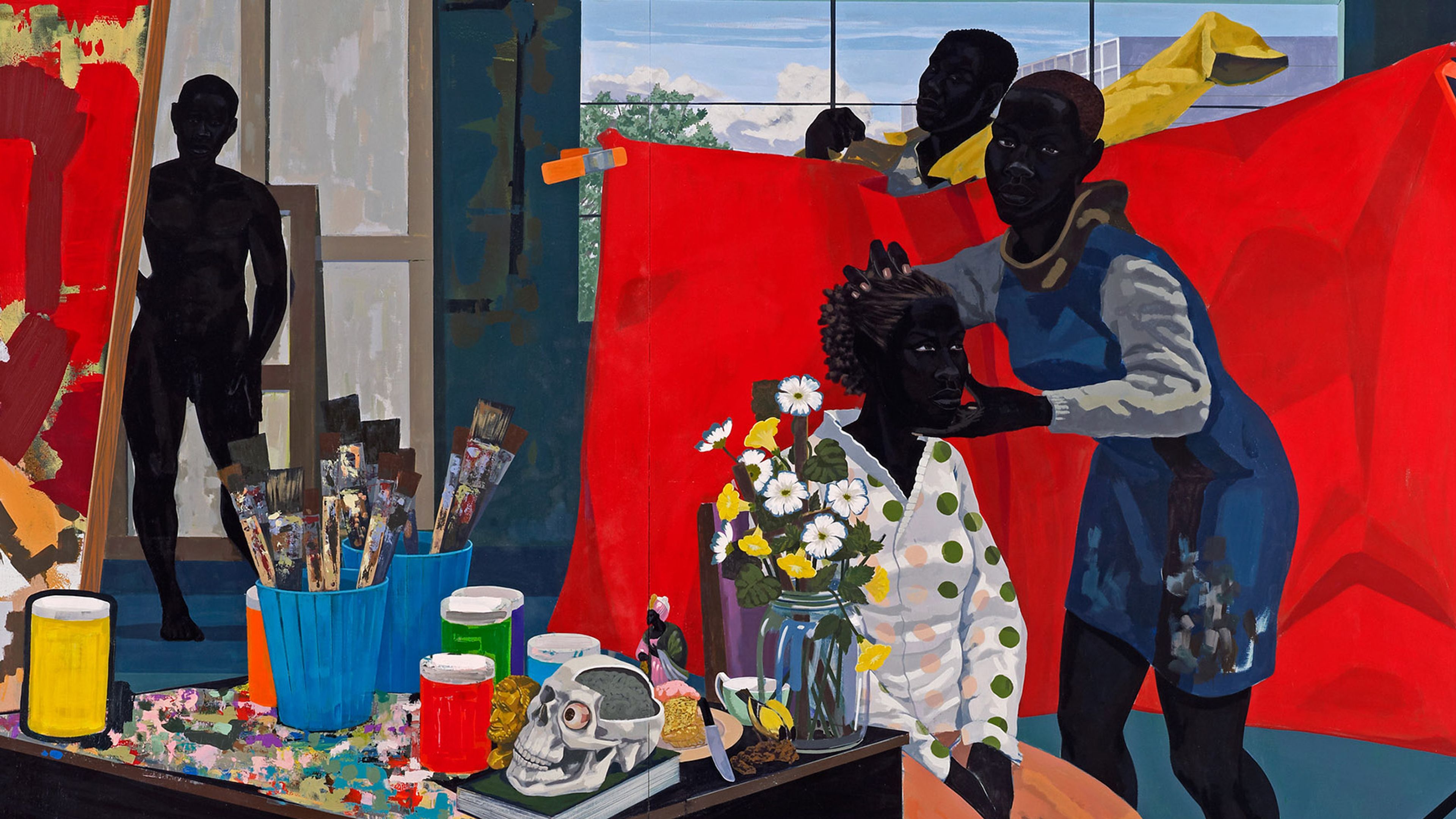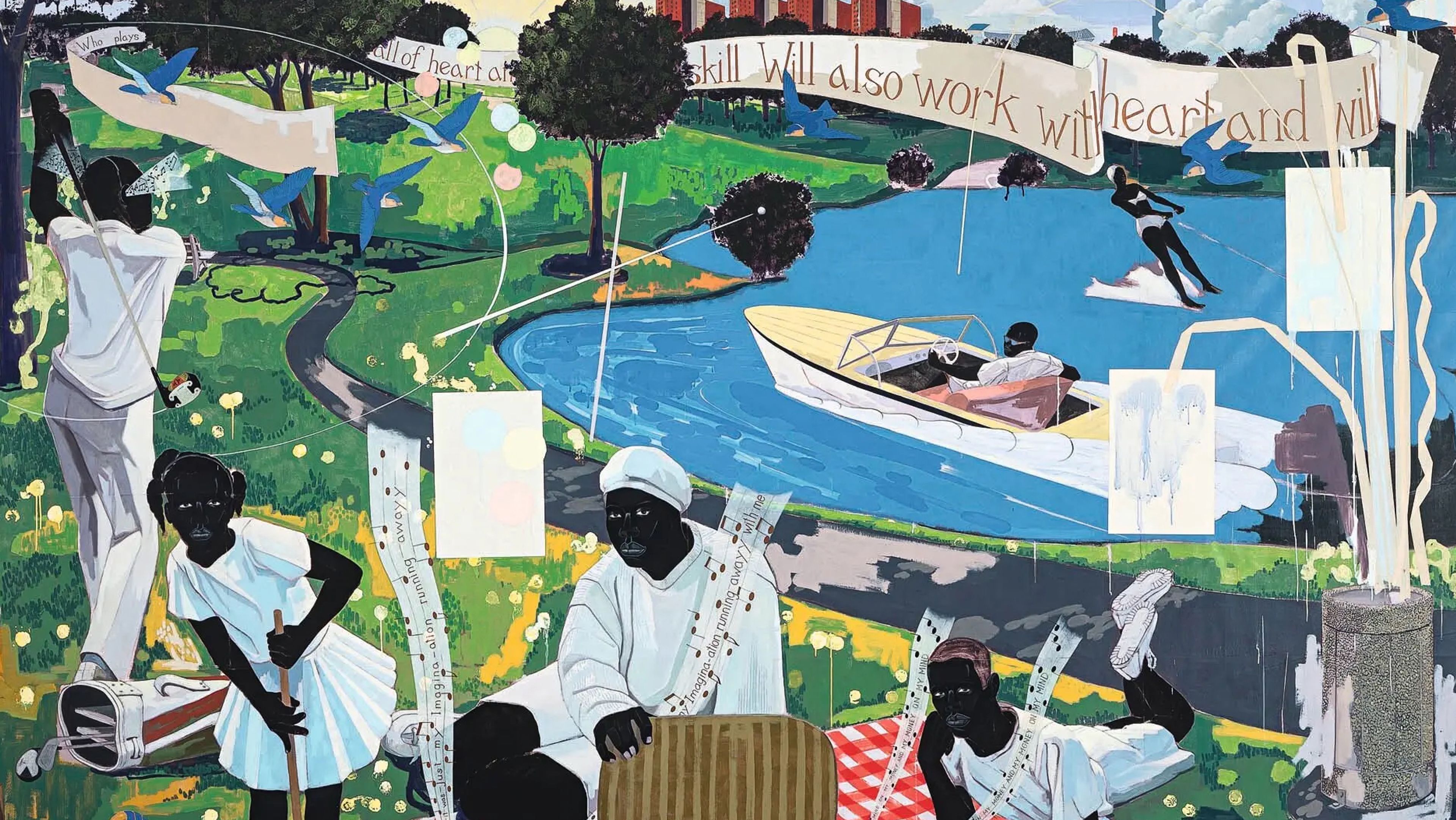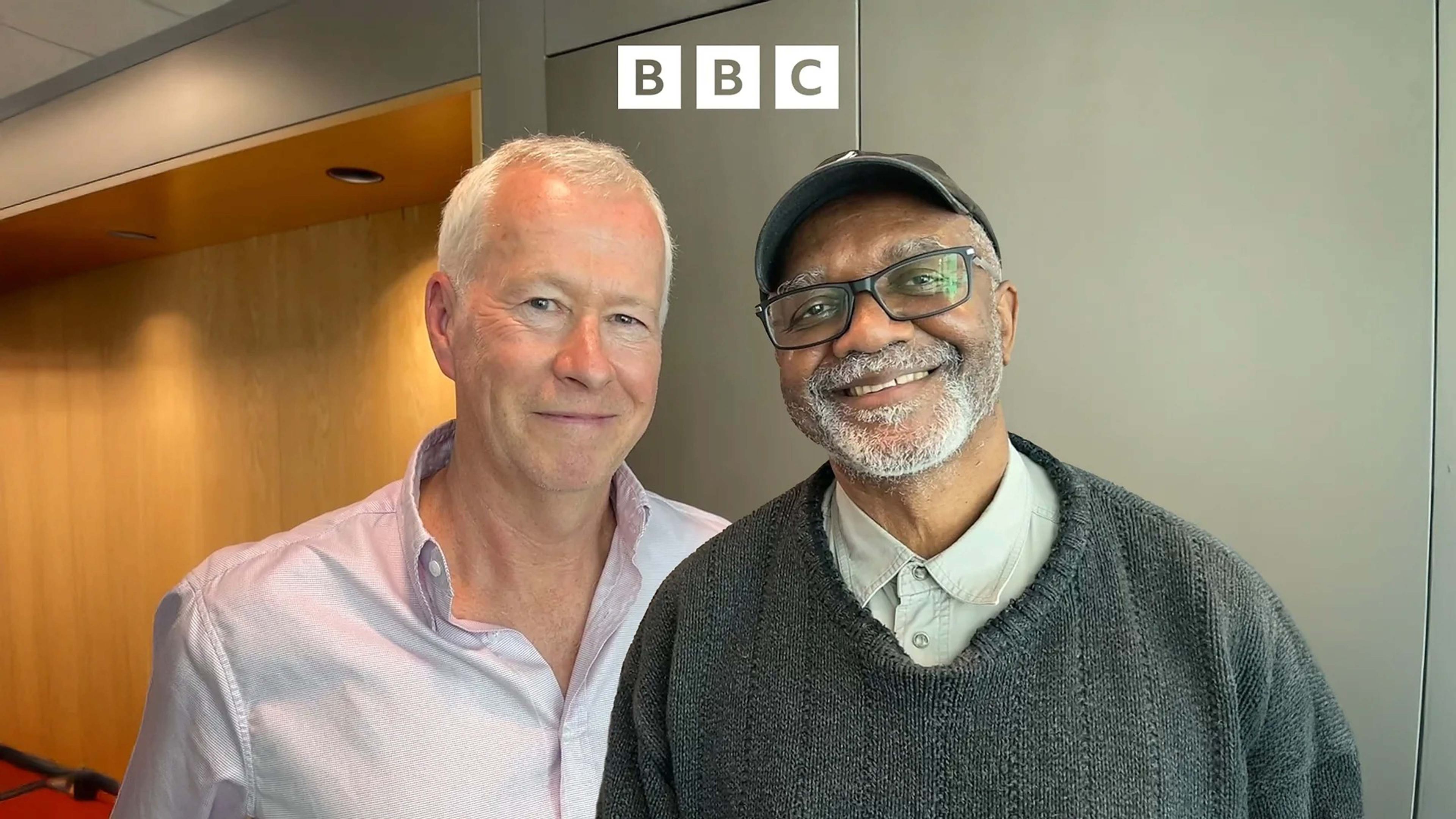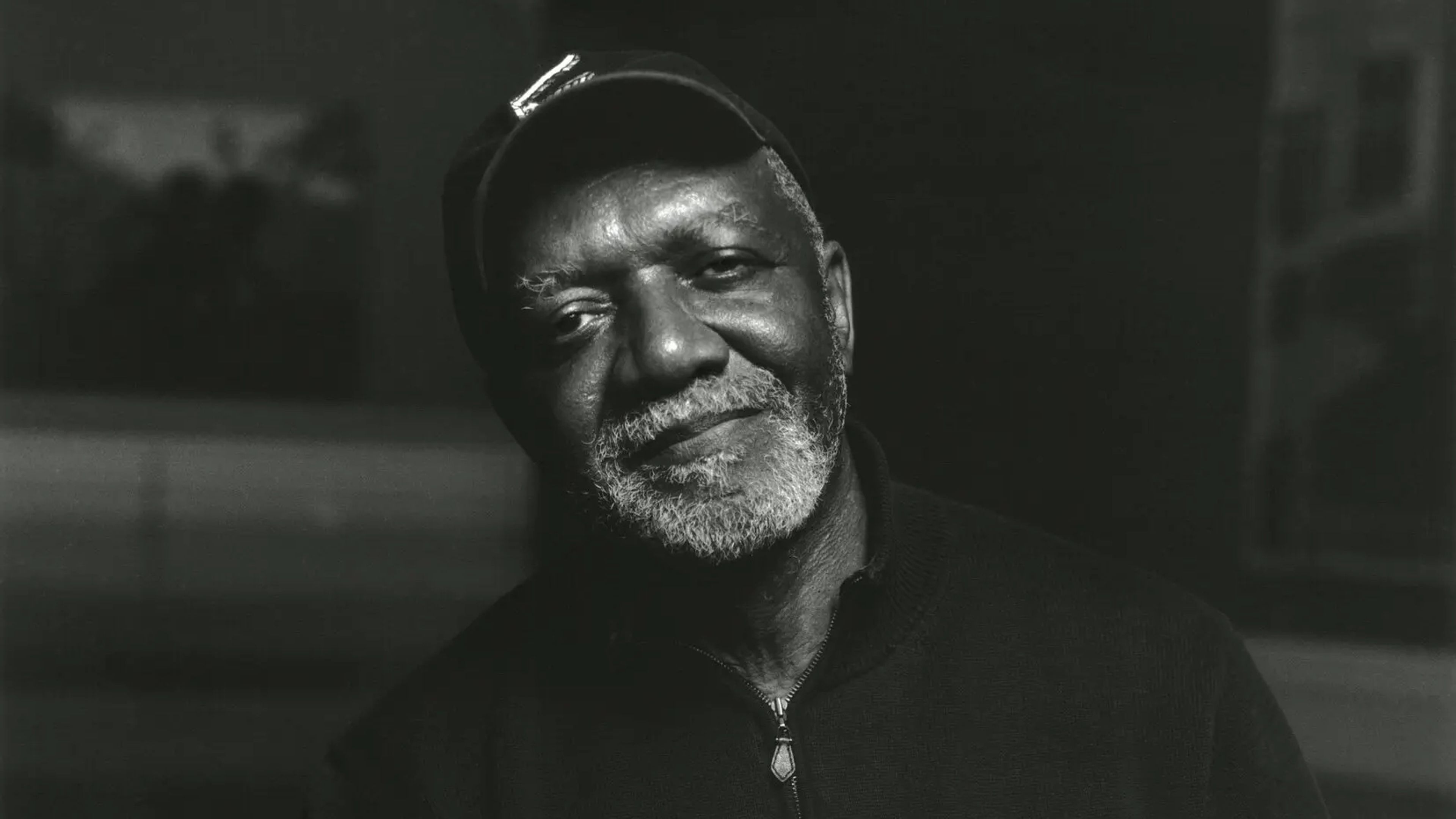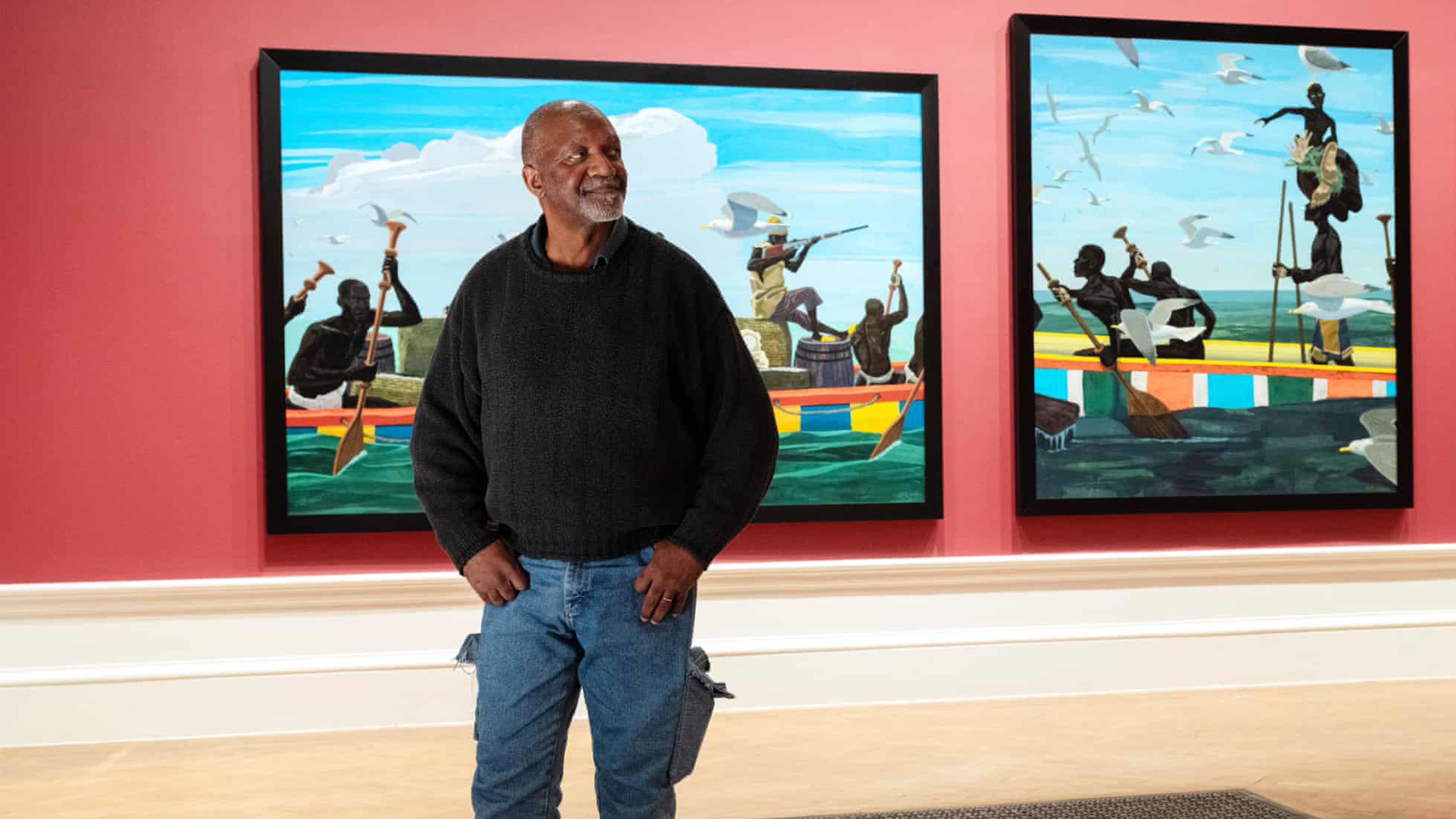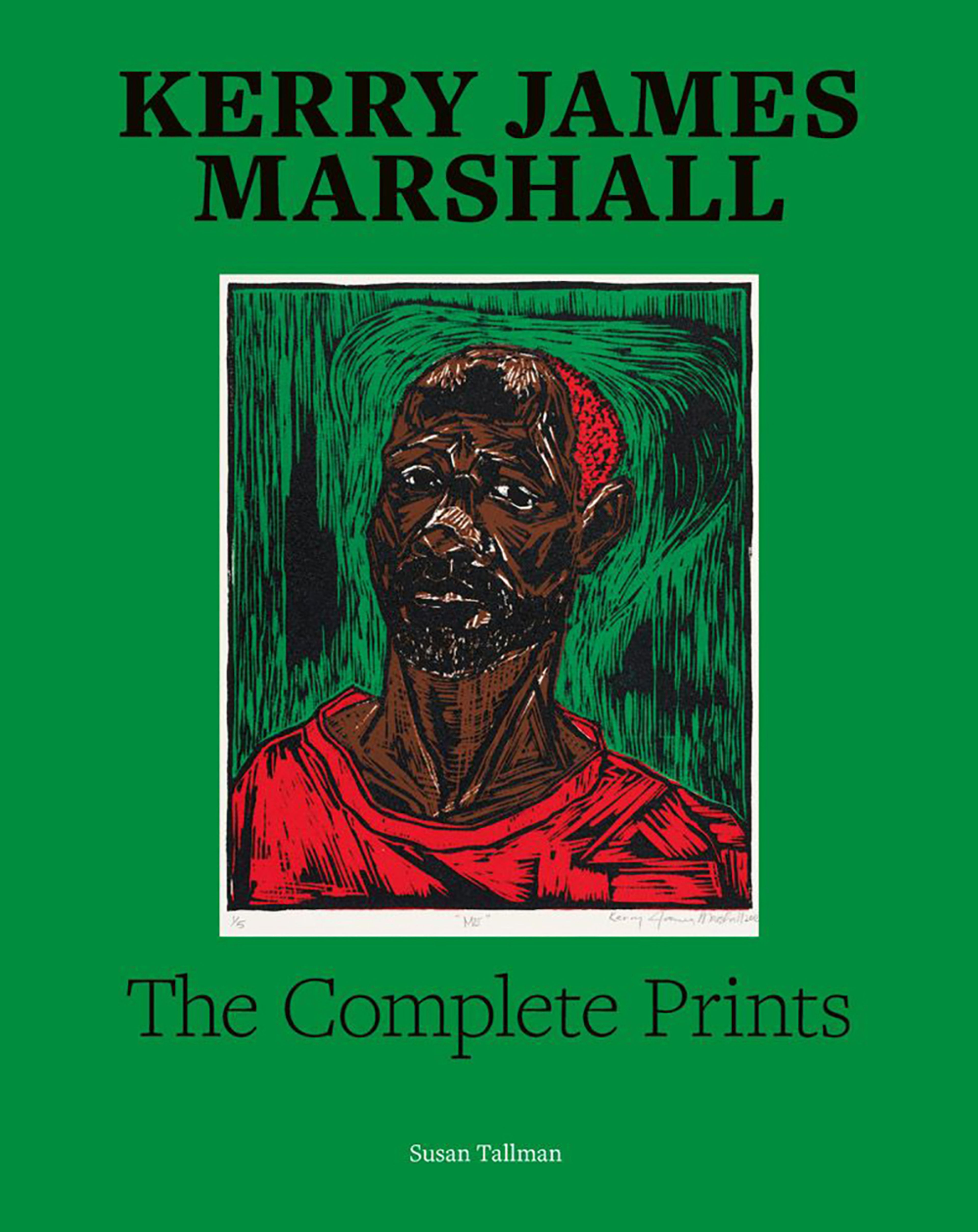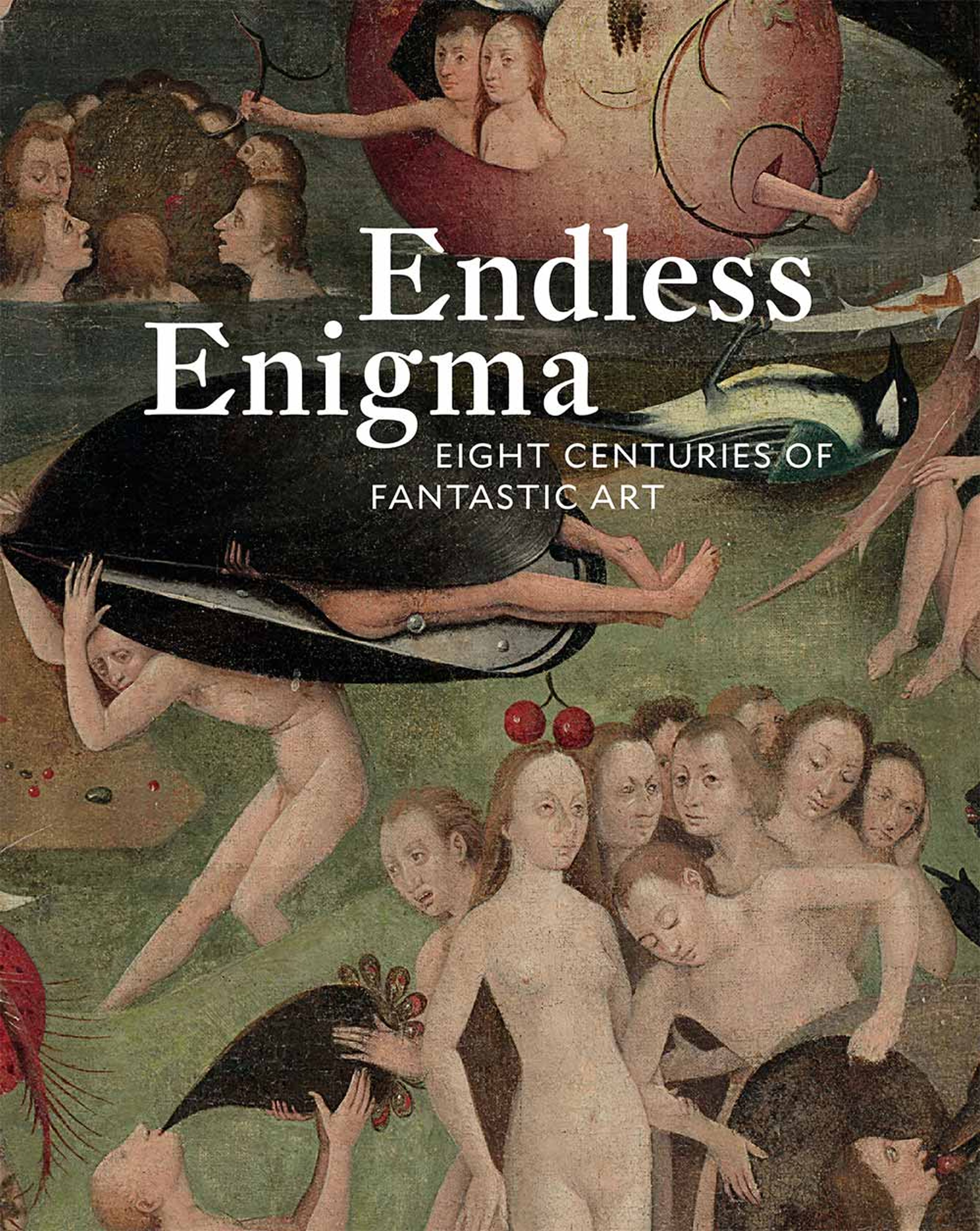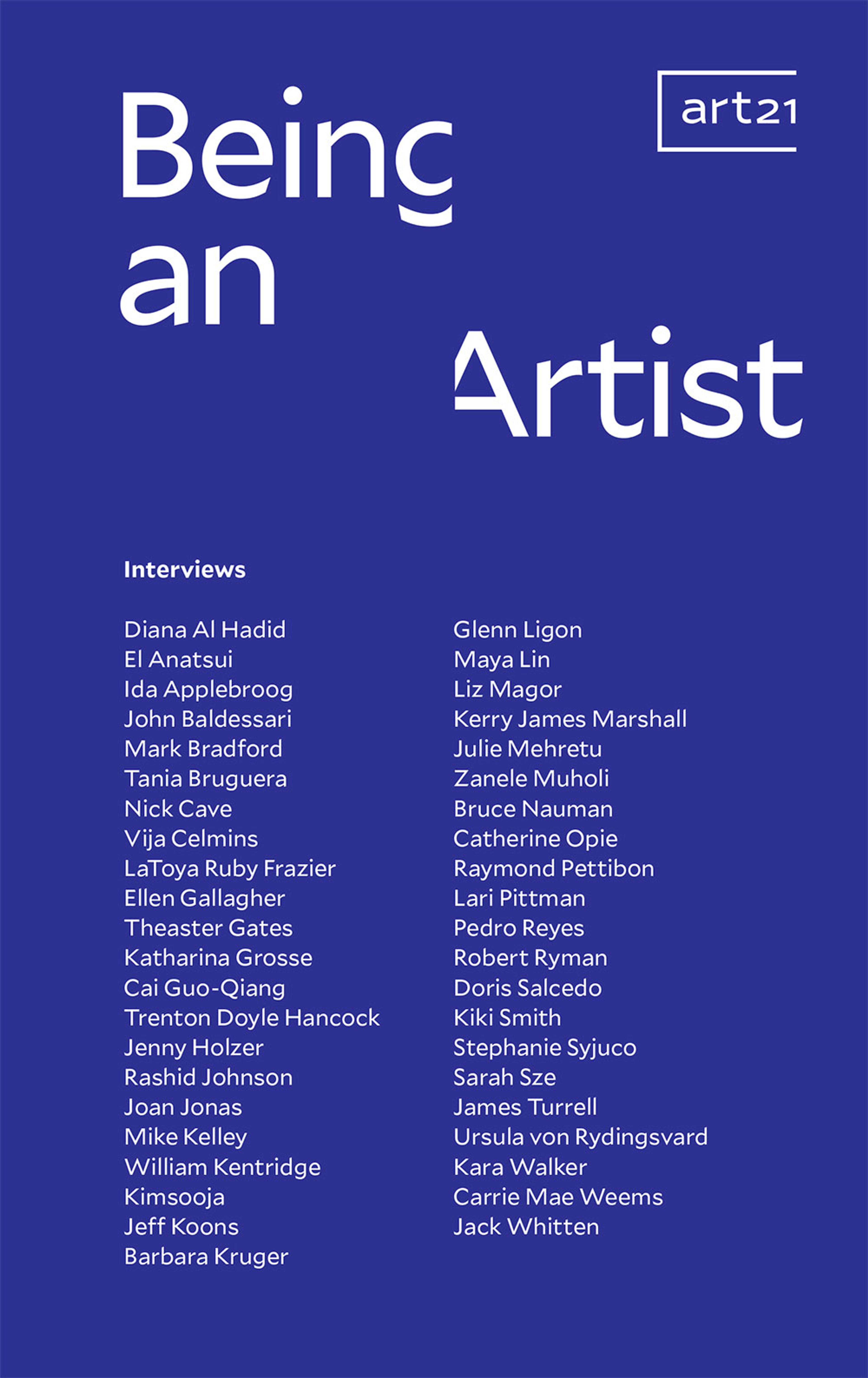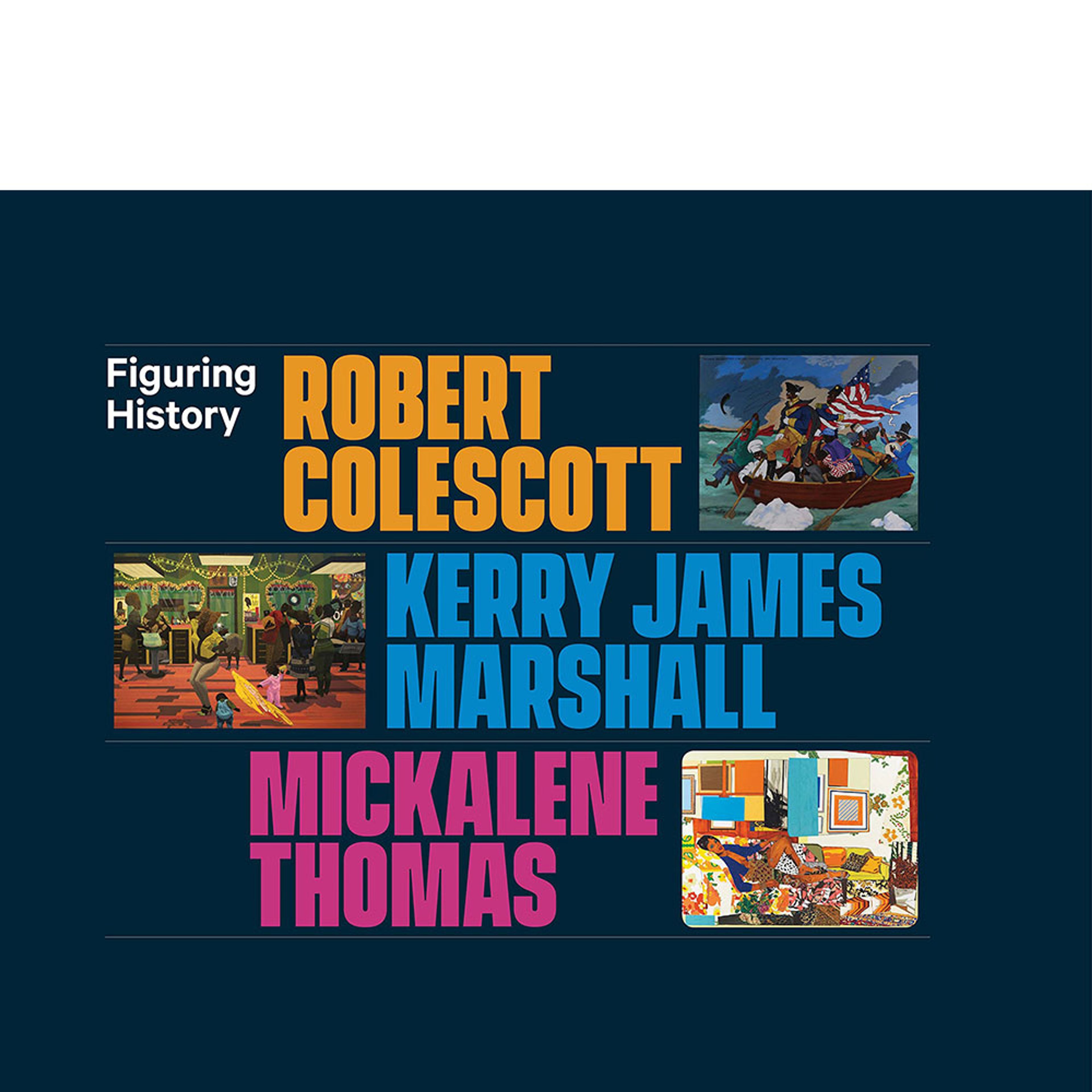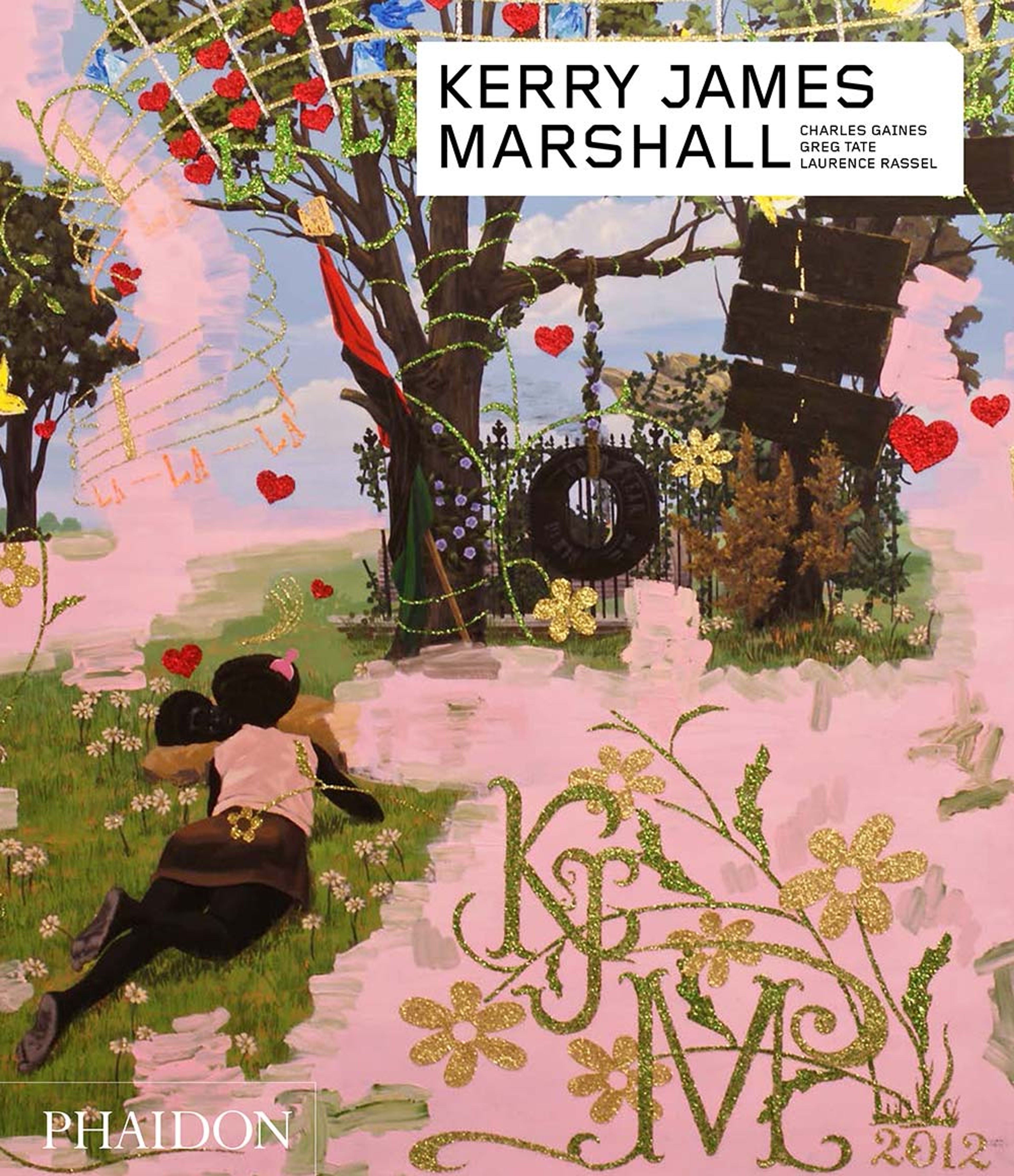Kerry James Marshall
Engaged in an ongoing dialogue with six centuries of representational painting, Kerry James Marshall (b. 1955) is known for his expansive body of work, which also includes drawings and sculptures. At the center of his oeuvre is the critical recognition of the conditions of invisibility long ascribed to Black figures in the Western pictorial tradition, and the creation of what he calls a "counter-archive" that brings them back into this narrative.
Learn MoreIn Focus: Africa Revisited
A deep look at Kerry James Marshall's ambitious new series of paintings, which just debuted in his critically acclaimed survey exhibition at the Royal Academy of Arts, London.
Survey
Exhibitions

Explore Exhibitions
Artist News
Biography
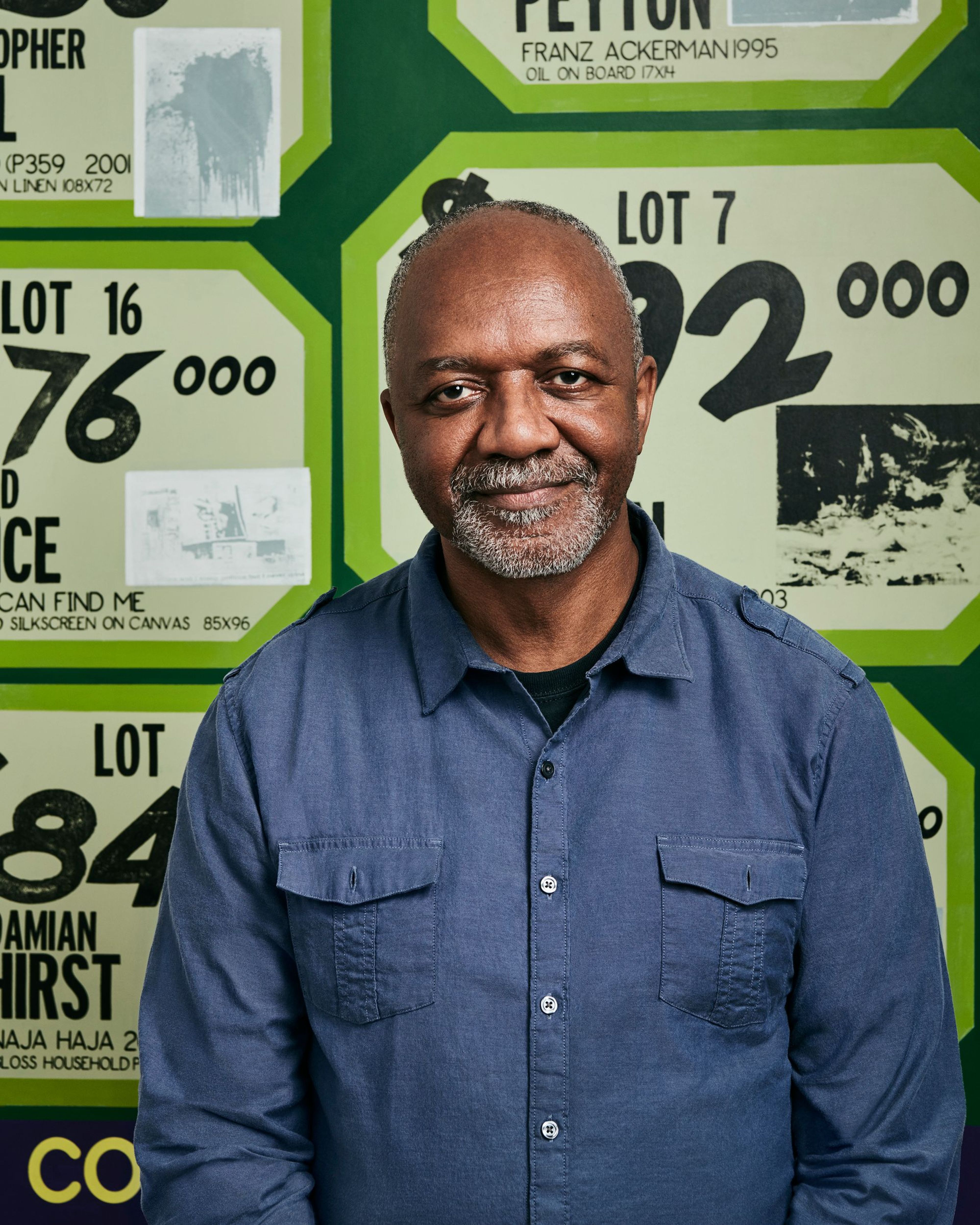
Portrait of Kerry James Marshall, 2018. Photo by Jason Bell
Engaged in an ongoing dialogue with six centuries of representational painting, Kerry James Marshall (b. 1955) is known for his expansive body of work, which also includes drawings and sculptures. At the center of his oeuvre is the critical recognition of the conditions of invisibility long ascribed to Black figures in the Western pictorial tradition, and the creation of what he calls a "counter-archive" that brings them back into this narrative.
Marshall was born in Birmingham, Alabama. He received his BFA from the Otis Art Institute in Los Angeles in 1978, where he was later awarded an honorary doctorate in 1999. In 2014, Marshall joined David Zwirner. Kerry James Marshall: Look See, an exhibition of new paintings by the artist, marked his first gallery solo show at David Zwirner in London that same year. Kerry James Marshall: History of Painting, the artist’s second solo presentation with the gallery, was on view in London in 2018.
Marshall has exhibited widely throughout Europe and the United States since the late 1970s. In 2018, Kerry James Marshall: Collected Works was presented at the Rennie Museum in Vancouver and Kerry James Marshall: Works on Paper at The Cleveland Museum of Art. His site-specific outdoor sculpture A Monumental Journey was also permanently installed in Hansen Triangle Park in downtown Des Moines, Iowa. From 2016 to 2017, Kerry James Marshall: Mastry, the first major museum survey of the artist’s work, was on view at the Museum of Contemporary Art Chicago, followed by The Met Breuer, New York, and the Museum of Contemporary Art, Los Angeles. In 2015, he created a large-scale mural specifically for the High Line, marking the artist’s first public commission in New York. In 2013, his work was the subject of a major survey entitled Kerry James Marshall: Painting and Other Stuff. The exhibition was first on view at the Museum van Hedendaagse Kunst Antwerpen in Antwerp. In 2014, it traveled to the Kunsthal Charlottenborg in Copenhagen and was co-hosted by two venues in Spain, the Fundació Antoni Tàpies in Barcelona and the Museo Nacional Centro de Arte Reina Sofía in Madrid.
The largest survey of the artist's work in the United Kingdom to date, Kerry James Marshall: The Histories, is currently on view at the Royal Academy of Arts, London. The exhibition will travel to Kunsthaus Zürich and Musée d’Art Moderne de Paris in 2026–2027.
Other prominent institutions that have presented solo shows include the National Gallery of Art, Washington, DC (2013); Secession, Vienna (2012); Vancouver Art Gallery (2010); San Francisco Museum of Modern Art (2009); and the Wexner Center for the Arts, Columbus, Ohio (2008). Previous traveling solo exhibitions include those organized by the Camden Arts Centre, London (2005), Museum of Contemporary Art Chicago (2003), and The Renaissance Society at the University of Chicago (1998).
In 2023, Marshall unveiled his stained-glass window commission for the Washington National Cathedral, Washington, DC.
The artist has been the recipient of many awards and honors. The Royal Academy, London, elected the artist as an Honorary Royal Academician in 2023. Marshall received the 2019 W. E. B. Du Bois Medal, which is considered Harvard University's highest honor in the field of African and African American studies. In 2016, the artist was the recipient of the Rosenberger Medal given by The University of Chicago for outstanding achievement in the creative and performing arts. In 2014, he received the Wolfgang Hahn Prize, an award given annually by the Gesellschaft für Moderne Kunst at the Museum Ludwig in Cologne. In 2013, he was one of seven new appointees named to President Barack Obama's Committee on the Arts and the Humanities. Other prestigious awards include a 1997 grant from the MacArthur Foundation and a 1991 fellowship from the National Endowment for the Arts.
Museum collections which hold works by the artist include the Art Institute of Chicago; Los Angeles County Museum of Art; The Metropolitan Museum of Art, New York; Museum of Contemporary Art Chicago; The Museum of Modern Art, New York; National Gallery of Art, Washington, DC; San Francisco Museum of Modern Art; The Studio Museum in Harlem, New York; Walker Art Center, Minneapolis; and the Whitney Museum of American Art, New York. Marshall lives and works in Chicago.
